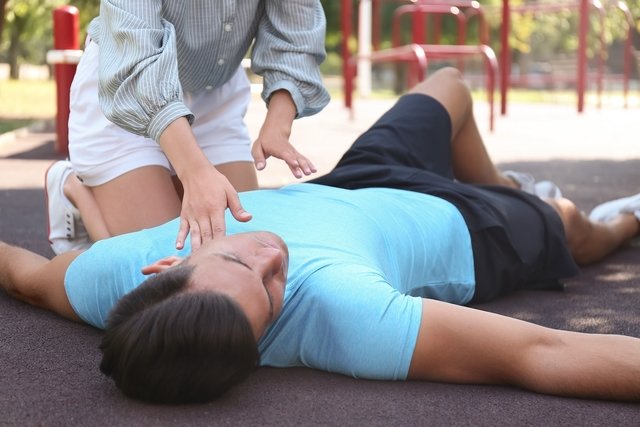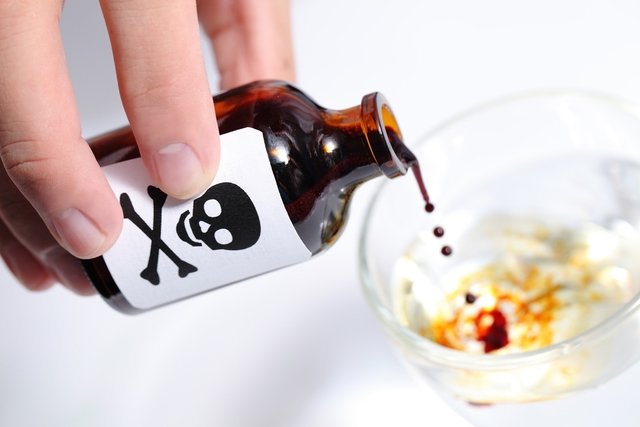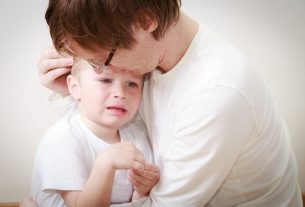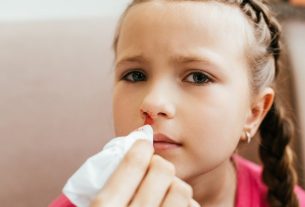In case of suspected poisoning and intoxication, you must first identify the type of toxic substance that was ingested, inhaled or had contact with the skin, or even if it was caused by insect venom, and call SAMU, Dial- Poison or Poison Information Center.
Poisoning can happen when a person ingests, inhales or comes into contact with a toxic substance, such as cleaning products, carbon monoxide, arsenic or cyanide, or when they are bitten by insects or venomous animals, for example.
Symptoms of poisoning are generally uncontrollable vomiting, difficulty breathing and mental confusion, and it is important not to offer liquids, food or medicine to the victim, nor to force vomiting. In all cases, you must wait for the ambulance to arrive, always checking whether the person is breathing.

First aid for poisoning
To provide first aid for poisoning, you must:
- Immediately call SAMU on number 192, Dial-Poisons on 0800-722-6001 or Poison Information Center on 0800 284 4343;
- Reduce exposure to the toxic agent:
- In case of ingestion, the best way is to do gastric lavage in the hospital;
- In the case of inhalation, attempts should be made to remove the victim from the contaminated environment to a safe, well-ventilated place, taking care that the rescuer is also safe and does not inhale the toxic substance. Then loosen the victim’s clothes;
- In case of contact with the skin, it is recommended to wash the victim’s skin with soap and water and remove clothing stained by the substance;
- If the toxic substance has come into contact with your eyes, you should wash your eyes with cold water for 20 minutes;
- In the case of an insect or venomous animal bite, you should wash the area with soap and water and elevate the limb where the bite is. Do not apply a tourniquet, cuts or apply any substance to the area, and take the person immediately to the hospital.
- Check if the person is conscious, asking your name or lightly squeezing your shoulders. If the person is conscious, calm them down and check for injuries;
- Place the person in a lateral safety positionespecially if you are unconscious to prevent you from suffocating if you need to vomit;
- Search for information about the substance that caused the poisoning, reading the label on the packaging of the toxic substance.
While waiting for medical help to arrive, it is important to pay attention to whether the victim is still breathing, starting cardiac massage if he stops breathing. Learn how to do cardiac massage correctly.
In cases of poisoning by ingestion, if the victim has burns on their lips, they should be gently wetted with water, without letting the victim swallow, as ingesting water can favor the absorption of the poison.
Symptoms of poisoning
Some of the symptoms that may indicate that someone is poisoned and needs medical help are:
- Burns and intense redness on the lips, throat or skin;
- Eye or skin irritation;
- Breath smelling of chemicals, such as gasoline;
- Dizziness, drowsiness, delirium or mental confusion;
- Persistent vomiting, nausea, abdominal pain or diarrhea;
- Blurred vision or headache;
- Difficulty breathing or slow breathing.
In some cases, seizures, stroke or cardiorespiratory arrest may also occur. Know how to identify the symptoms of cardiorespiratory arrest.
Furthermore, other signs, such as empty pill packs, broken pills or intense smells coming from the victim’s body, may be a sign that they were using a toxic substance and medical help should be called immediately.
What not to do in case of poisoning
In case of poisoning, it is not recommended to give liquids to the victim, as this may favor the absorption of some poisons and cause vomiting, when the victim has ingested a corrosive or solvent, unless advised by a healthcare professional.
Furthermore, you should not make the person vomit and do not give the person medicine or food.
Information gathered from the victim, or the scene, should be provided to healthcare professionals as soon as they arrive at the scene.
Bibliography
- HANLEY, M. E.; PATEL, P. H. IN: STATPEARLS (INTERNET). TREASURE ISLAND (FL): STATPEARLS PUBLISHING. Carbon Monoxide Toxicity. 2023. Available at: <https://www.ncbi.nlm.nih.gov/books/NBK430740/>. Accessed on 01 Sep 2023
- LEE, J.; et al. Clinical spectrum of acute poisoning in children admitted to the pediatric emergency department. Pediatr Neonatol. 60. 1; 59-67, 2019
- NADLER, A. Lead poisoning in children: emergency department recognition and management. Pediatr Emerg Med Pract. 19. 4; 1-20, 2022
- MULLINS, M. E.; KRAUT, J. A. The Role of the Nephrologist in Management of Poisoning and Intoxication: Core Curriculum 2022. Am J Kidney Dis. 79. 6; 877-889, 2022
- ST JOHN AMBULANCE AUSTRALIA. First aid for poisoning. 2023. Disponível em: <https://stjohnwa.com.au/online-resources/first-aid-information-and-resources/poisoning>. Acesso em 01 set 2023
- HULSE, EJ; et al. Organophosphorus nerve agent poisoning: managing the poisoned patient. Br J Anaesth. 123. 4; 457-463, 2019
- WENNIG, R.; et al. Mushroom Poisoning. Dtsch Ärztebl Int. 117. 42; 701-708, 2020
- UPCHURCH, C.; et al. Extracorporeal membrane oxygenation use in poisoning: a narrative review with clinical recommendations. Clin Toxicol (Phila). 59. 10; 877-887, 2021
- MINISTRY OF HEALTH. Dial-intoxication. 2020. Available at: <https://www.gov.br/anvisa/pt-br/assuntos/agrotoxicos/disque-intoxicacao>. Accessed on 01 Sep 2023

Sign up for our newsletter and stay up to date with exclusive news
that can transform your routine!
Warning: Undefined array key "title" in /home/storelat/public_html/wp-content/plugins/link-whisper-premium/templates/frontend/related-posts.php on line 12
Warning: Undefined array key "title_tag" in /home/storelat/public_html/wp-content/plugins/link-whisper-premium/templates/frontend/related-posts.php on line 13




